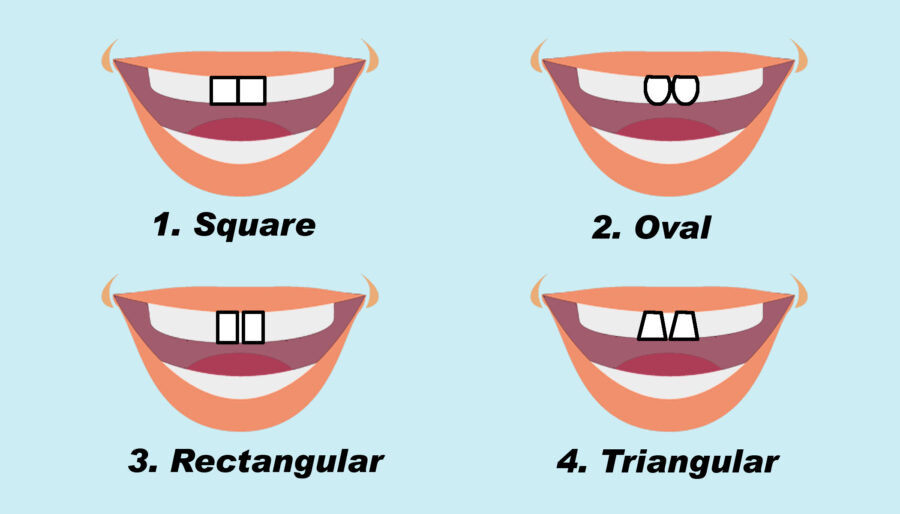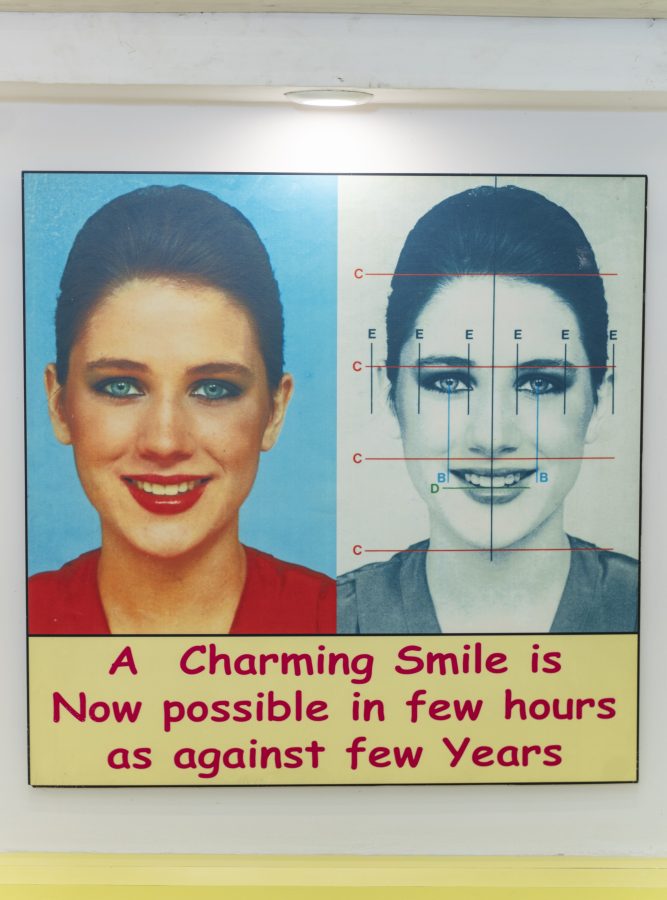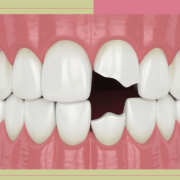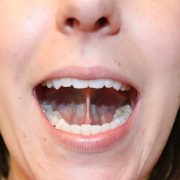In addition to being aesthetically beautiful, a bright smile with properly aligned teeth increases confidence and improves oral health in general. We’ll look at useful advice and techniques in this blog to help you get the perfect dental alignment and form you’ve always wanted. We can help you with everything from realising the value of good oral hygiene to investigating different orthodontic alternatives and cosmetic dentistry procedures. There are ways to improve your smile and get a perfect teeth shape, regardless of whether you’re coping with gaps, misalignments, or other dental flaws. Now let’s get started and learn how to improve your oral health, give your teeth a makeover, and smile with confidence!
Understand Perfect Teeth Shape
Perfect teeth shape is not just about having a Hollywood-worthy smile; it’s about achieving symmetry, proportion, and alignment that harmonize with your facial features, enhance your overall appearance, and boost your confidence. Let’s delve deeper into what defines perfect teeth shape, the common factors leading to teeth shape changes, and the impact of teeth shape on overall facial aesthetics and self-esteem.

Perfect Teeth Shape: Factors
Symmetry: Perfect teeth exhibit symmetry, meaning that the teeth on one side of the mouth mirror those on the other side in terms of size, shape, and position. Symmetrical teeth create balance and harmony in your smile, drawing attention to your overall facial aesthetics.
Proportion: Proportion refers to the relationship between the size and shape of your teeth and how they complement your facial features. Ideally, teeth should be proportionate to the size and shape of your face, ensuring a natural and attractive appearance.
Alignment: Proper alignment of the teeth ensures that they fit together correctly when you bite down. Misaligned or crooked teeth can affect not only your smile but also your bite function and overall dental health. Achieving proper alignment is essential for both aesthetic and functional reasons.
Common Factors that cause Teeth Shape changes
- As we age, natural wear and tear can affect the enamel of our teeth, leading to changes in their shape and appearance. Additionally, factors such as gum recession and tooth decay become more prevalent with age, further impacting tooth shape.
- Our genetic makeup plays a significant role in determining the size, shape, and alignment of our teeth. Some individuals may inherit traits that predispose them to certain dental conditions or irregularities in tooth shape.
- Certain habits, such as teeth grinding (bruxism), nail biting, or using teeth as tools to open packages, can cause wear and tear on the enamel and lead to changes in tooth shape over time.
- Accidents or injuries to the mouth can result in chipped, cracked, or fractured teeth, altering their shape and appearance. Trauma to the mouth can also affect the alignment of the teeth, leading to misalignment issues.
Assessment and Diagnosis
When it comes to achieving the ideal tooth shape and ensuring optimal oral health, professional dental assessment and diagnosis are paramount. Let’s explore why these processes are crucial, the comprehensive examination techniques employed by renowned dentist Dr. Chirag Chamria, and the utilisation of advanced technology for accurate diagnosis.

Importance of Professional Dental Assessment
Every smile is unique, and what works for one person may not necessarily work for another. A thorough dental assessment allows the dentist to create personalised treatment plans that address specific concerns and goals, whether they involve cosmetic enhancements or functional improvements.
Regular dental assessments enable early detection of dental issues such as cavities, gum disease, or malocclusion. Early intervention not only prevents further damage but also reduces the need for invasive treatments down the line, preserving the natural teeth and promoting long-term oral health.
By assessing factors such as tooth alignment, bite function, and overall oral health, dentists can optimize treatment outcomes and ensure that patients achieve the desired results. This proactive approach minimises the risk of complications and enhances patient satisfaction.
Examination Techniques by Dr. Chirag Chamria
Dr. Chamria conducts a thorough clinical examination of the teeth, gums, and surrounding oral tissues, evaluating factors such as tooth alignment, occlusion, and signs of decay or damage. Advanced digital imaging techniques, such as X-rays and intraoral cameras, allow Dr. Chamria to obtain detailed images of the teeth and jawbone, facilitating accurate diagnosis and treatment planning.

Precision impressions of the teeth may be taken to create custom restorations or orthodontic appliances tailored to the patient’s unique anatomy. Dr. Chamria assesses the health of the gums and supporting structures through periodontal probing and evaluation of gum tissue appearance and attachment levels. A comprehensive functional analysis involves assessing the patient’s bite function, jaw movements, and occlusal relationships to identify any issues that may impact the ideal teeth shape or overall oral health.
Treatment Options for Teeth Shape Correction
Orthodontic Treatments
Orthodontic procedures involve the use of braces, aligners, or other appliances to gradually shift teeth into their proper alignment. This is particularly effective for addressing issues such as overcrowding, gaps between teeth, and misaligned bites. By exerting gentle pressure over time, orthodontic treatments help to reposition teeth and improve overall alignment without the need for invasive procedures.
Veneers
Dental veneers are thin, custom-made shells crafted from tooth-colored materials (usually porcelain or composite resin) that are bonded to the front surface of teeth. Veneers can effectively conceal imperfections such as chips, cracks, and irregularities in shape or size. They provide a natural-looking and durable solution for enhancing the appearance of teeth and creating a more uniform smile.
Bonding
Dental bonding involves the application of a tooth-colored composite resin material to the surface of teeth. This versatile procedure can be used to reshape teeth, fill in gaps, repair minor chips or cracks, and improve overall symmetry. Bonding is a relatively quick and affordable option for enhancing teeth’s shape and aesthetics.
Contouring
Dental contouring, also known as enameloplasty or tooth reshaping, involves the removal of small amounts of tooth enamel to alter the shape, length, or surface texture of teeth. This minimally invasive procedure is typically used to correct minor imperfections such as uneven edges, rough surfaces, or overlapping enamel. Contouring can be combined with bonding for comprehensive teeth reshaping and smile enhancement.

Malocclusion
In cases where teeth misalignment or malocclusion is severe or cannot be effectively corrected through non-invasive or cosmetic procedures, surgical intervention may be necessary. Orthognathic surgery, also known as corrective jaw surgery, may be recommended to reposition the jaws and improve bite alignment. This comprehensive approach addresses underlying skeletal issues and can result in significant improvements in both function and aesthetics.
Lifestyle Changes for Maintaining Perfect Teeth Shape
Regular Brushing and Flossing
Brushing teeth at least twice a day and flossing daily help remove plaque buildup, preventing tooth decay and gum disease. Proper oral hygiene practices not only keep teeth clean and healthy but also contribute to maintaining their natural shape and alignment by preventing decay and gum recession.
Using Fluoride Toothpaste
Fluoride toothpaste strengthens tooth enamel, making teeth more resistant to decay and erosion. Incorporating fluoride toothpaste into your oral hygiene routine can help preserve the integrity of teeth over time.

Balanced Diet
Consuming a balanced diet rich in vitamins, minerals, and nutrients is essential for maintaining optimal dental health. Foods high in calcium, such as dairy products and leafy greens, help strengthen tooth enamel, while vitamin-rich fruits and vegetables promote gum health.
Limiting Sugary and Acidic Foods
Sugary and acidic foods and beverages can contribute to tooth decay and erosion, which can alter teeth shape over time. Limiting consumption of sugary snacks, sodas, and acidic fruits can help protect teeth from decay and preserve their natural shape.
Avoiding Nail Biting and Teeth Grinding
Nail biting and teeth grinding (bruxism) can exert excessive pressure on teeth, leading to wear, chips, and misalignment over time. Using stress-reduction techniques, wearing a mouthguard at night, and practicing mindfulness can help alleviate these habits and prevent damage to tooth shape.
Quitting Smoking
Smoking not only stains teeth but also increases the risk of gum disease and tooth loss. Quitting smoking and avoiding tobacco products can significantly improve oral health and preserve tooth shape by reducing the risk of gum recession and bone loss.
Conclusion
We have now discussed the significance of having a perfect tooth shape as well as the variety of potential treatment choices. Your dream smile is achievable with non-invasive orthodontics, cosmetic procedures, and surgical interventions. Today, make the first move toward improving your dental health and self-esteem. Speak with Dr. Chirag Chamria for individual advice and consultation. Make an appointment with us to get started on the path to the ideal smile.






